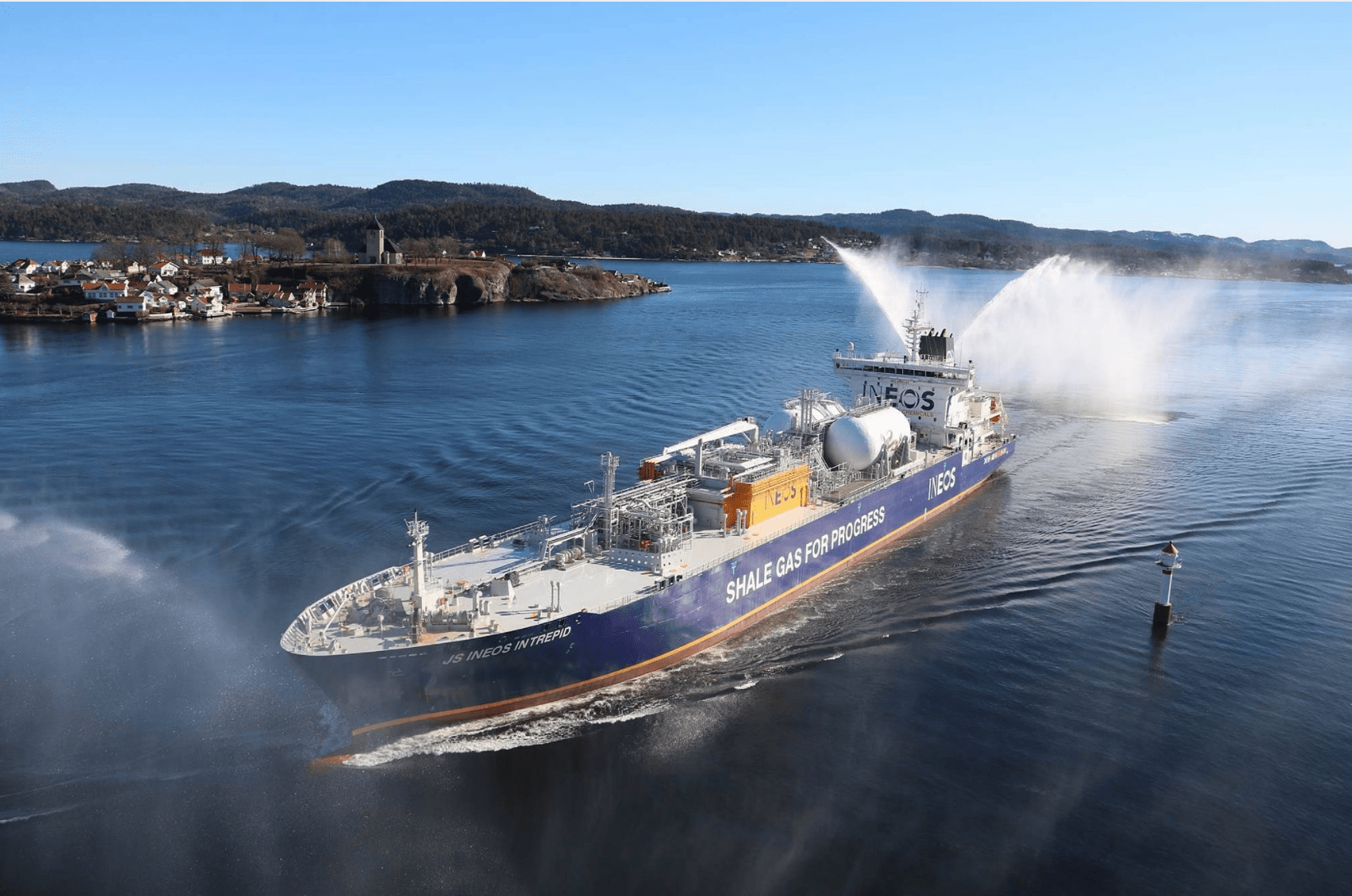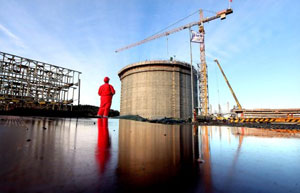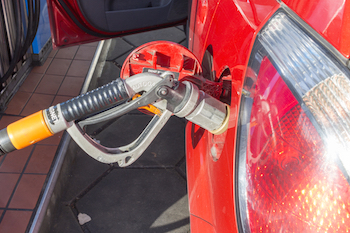Naphtha
 Naphtha is a generic term referring to a range of volatile and flammable liquids produced by the distillation of petroleum. The liquids, which differ slightly in their chemical structures and boiling points, have various applications in the refining process.
Naphtha is a generic term referring to a range of volatile and flammable liquids produced by the distillation of petroleum. The liquids, which differ slightly in their chemical structures and boiling points, have various applications in the refining process.
“Light” naphtha, which typically contains low levels of aromatic molecules and high levels of paraffins, competes with natural gas liquids for use in petrochemical plants and is also drawn in to the gasoline blending market as a low octane but light mixing agent to provide a volumetric increase.
“Heavy” naphtha, also known as “reforming” or “N+A” (naphthenes and aromatics) naphtha is used either as a feedstock for a refinery reformer to produce octane enhancing gasoline blendstock called reformate, in an aromatics plant to make benzene or in the production of ammonia or other fertilizers.
Annual Quantity: INEOS Trading & Shipping trades and transports about 5 million tonnes of naphtha every year.
Ethane
 After methane, ethane is the second-largest component of natural gas and is the lightest of the four natural gas liquids (NGLs) which are, from lightest to heaviest: ethane, propane, butane and natural gasoline. Ethane is a by-product of crude oil production (Associated Gas) and a by-product of natural gas production (Non Associated Gas). Gas processing takes place if the prices of individual NGLs are high enough to cover the costs involved or if the calorific value of the natural gas is too high. It is also a by-product of the refinery process and is transported in pressurised vessels.
After methane, ethane is the second-largest component of natural gas and is the lightest of the four natural gas liquids (NGLs) which are, from lightest to heaviest: ethane, propane, butane and natural gasoline. Ethane is a by-product of crude oil production (Associated Gas) and a by-product of natural gas production (Non Associated Gas). Gas processing takes place if the prices of individual NGLs are high enough to cover the costs involved or if the calorific value of the natural gas is too high. It is also a by-product of the refinery process and is transported in pressurised vessels.
Ethane’s primary use is as a feedstock for the petrochemical industry although it is sometimes used to fuel the gas processing plant or refinery that it is produced in and can also be used as a refrigerant gas.
Annual Quantity: INEOS Trading & Shipping trades and transports about 2million tonnes of ethane every year.
Propane
 The second lightest of the four natural gas liquids (NGLs), one of the main advantages of propane is that it remains a liquid, and thus in a dense form, until it boils into a gas much closer to room temperature and pressure than methane. This enables it to be more easily compressed into a liquid for transportation and storage.
The second lightest of the four natural gas liquids (NGLs), one of the main advantages of propane is that it remains a liquid, and thus in a dense form, until it boils into a gas much closer to room temperature and pressure than methane. This enables it to be more easily compressed into a liquid for transportation and storage.
As well as being a fundamental building block in the petrochemical process, propane, marketed as liquefied petroleum gas (LPG), is also a convenient fuel used globally for domestic purposes; in the northern hemisphere, propane is used for home heating, while in Africa it is used as a cooking gas. In some markets, propane is also used as a fuel for cars (known as Autogas). Finally farm use, crop drying in particular, accounts for some propane demand especially in the Americas.
Annual Quantity: INEOS Trading & Shipping trades and transports about 1 million tonnes of propane every year.
Butane
 As the second heaviest of the four natural gas liquids, even more than propane due to its relatively high boiling temperature, butane can be easily stored and transported in liquid form in low pressure containers.
As the second heaviest of the four natural gas liquids, even more than propane due to its relatively high boiling temperature, butane can be easily stored and transported in liquid form in low pressure containers.
As a minor component of LPG, butane is widely used as a household and automotive fuel. Other uses include as a feedstock in the petrochemical process, as refrigerant gas, as an aerosol propellant and in the manufacture of synthetic rubber. Finally, butane’s typically high octane rating means that it is in demand as a gasoline blendstock. The high Reid Vapour Pressure of butane usually means that it is used as a gasoline blendstock during the winter but not in the summer.
